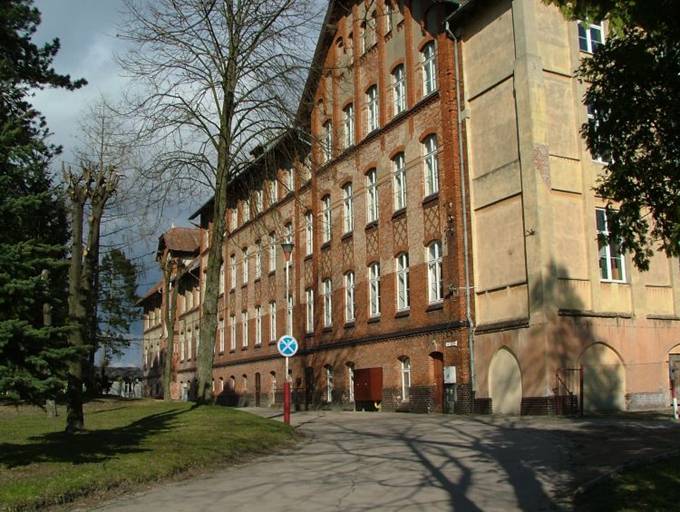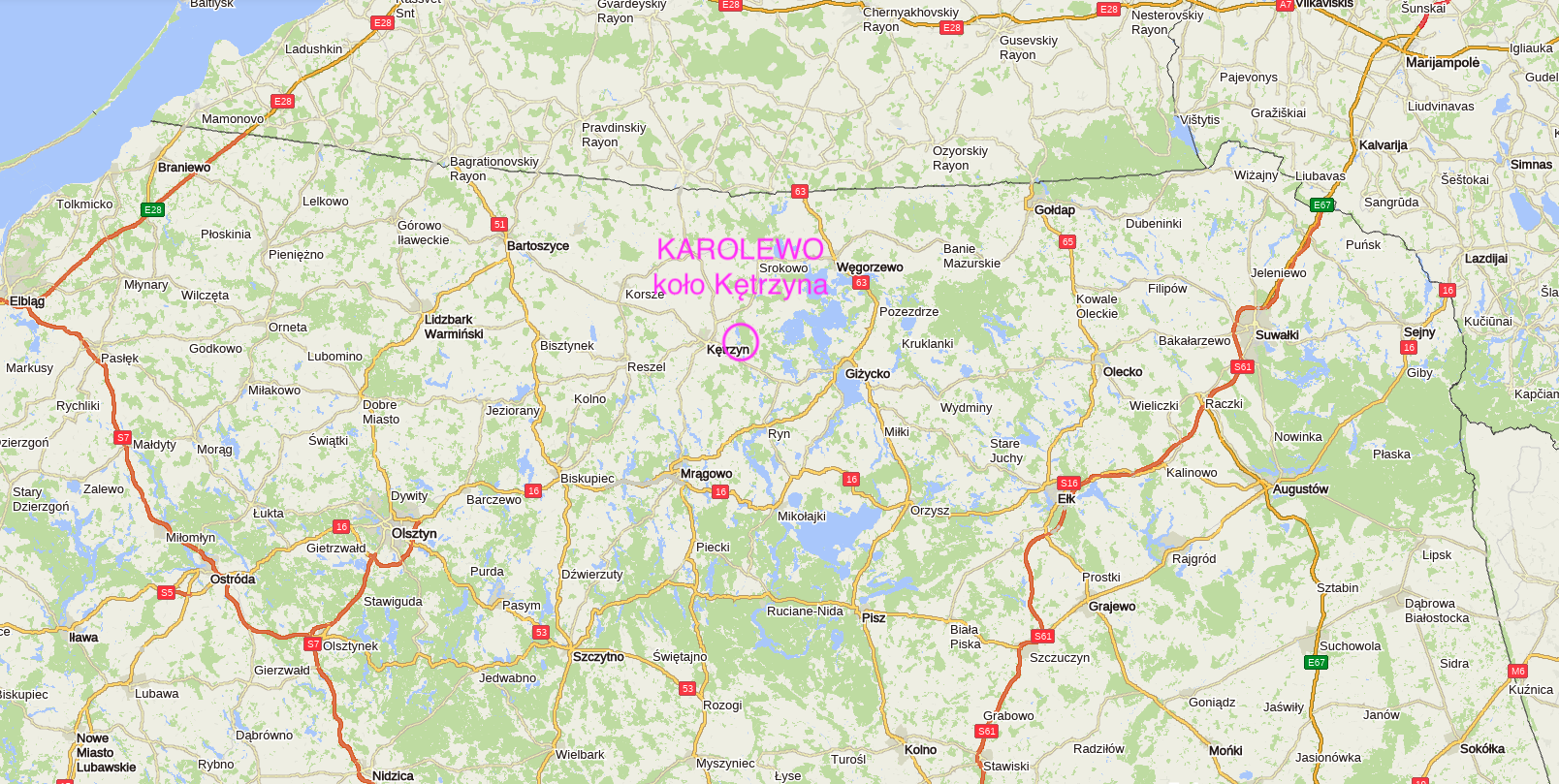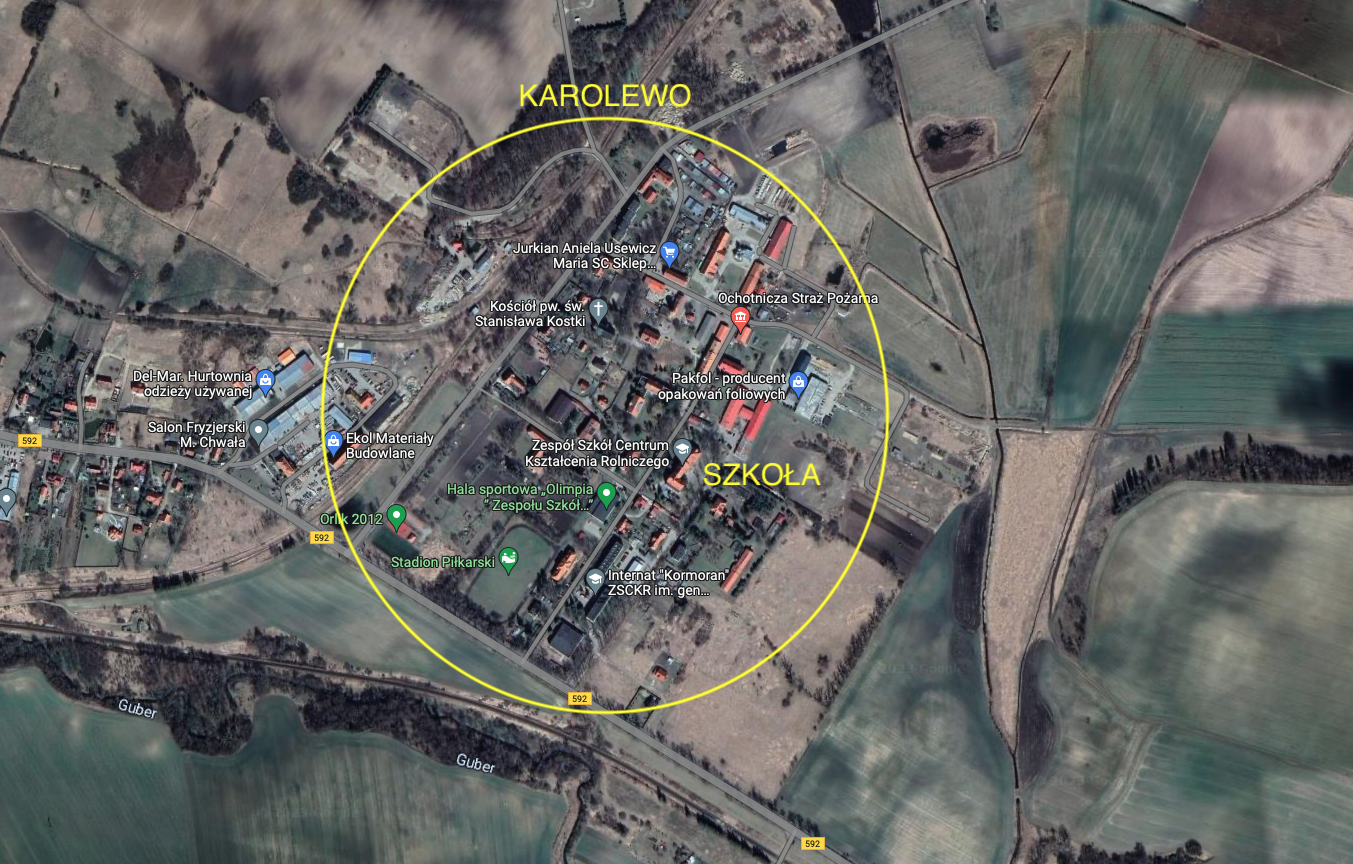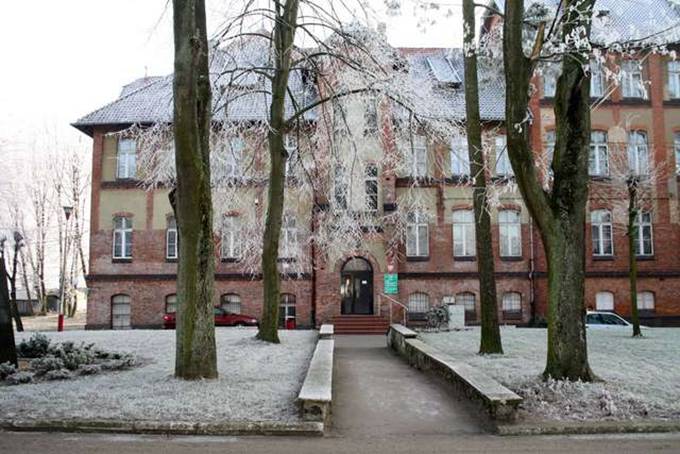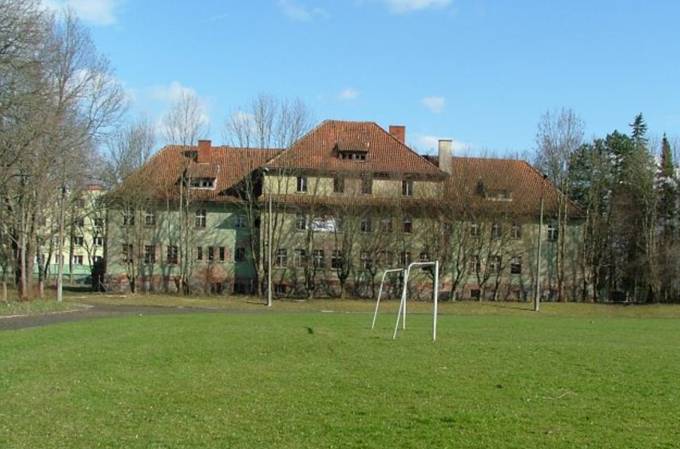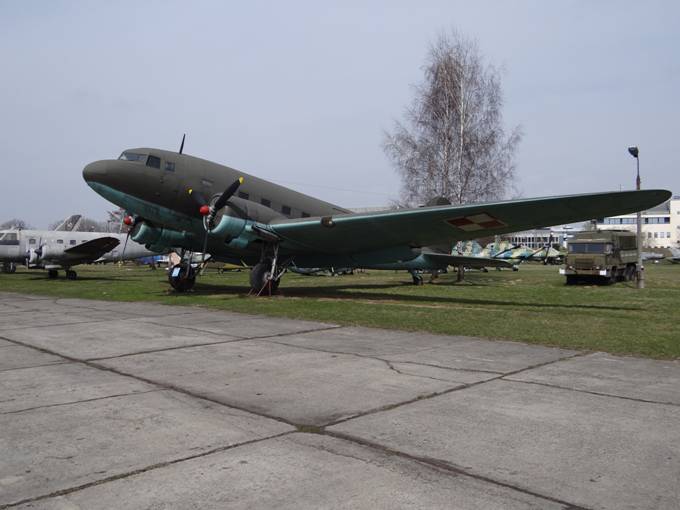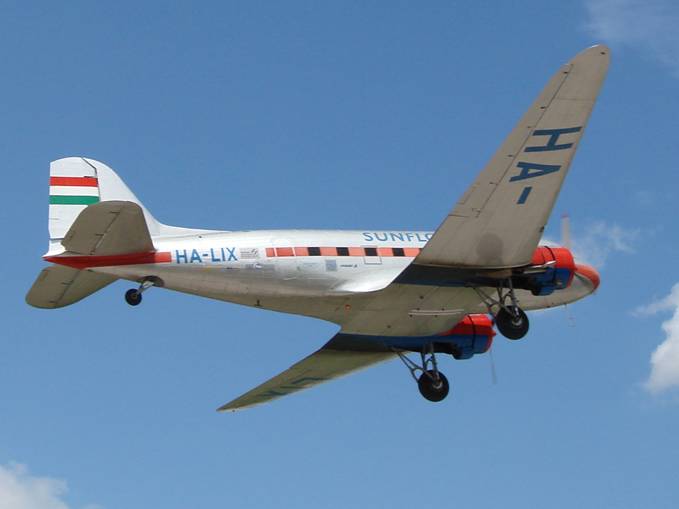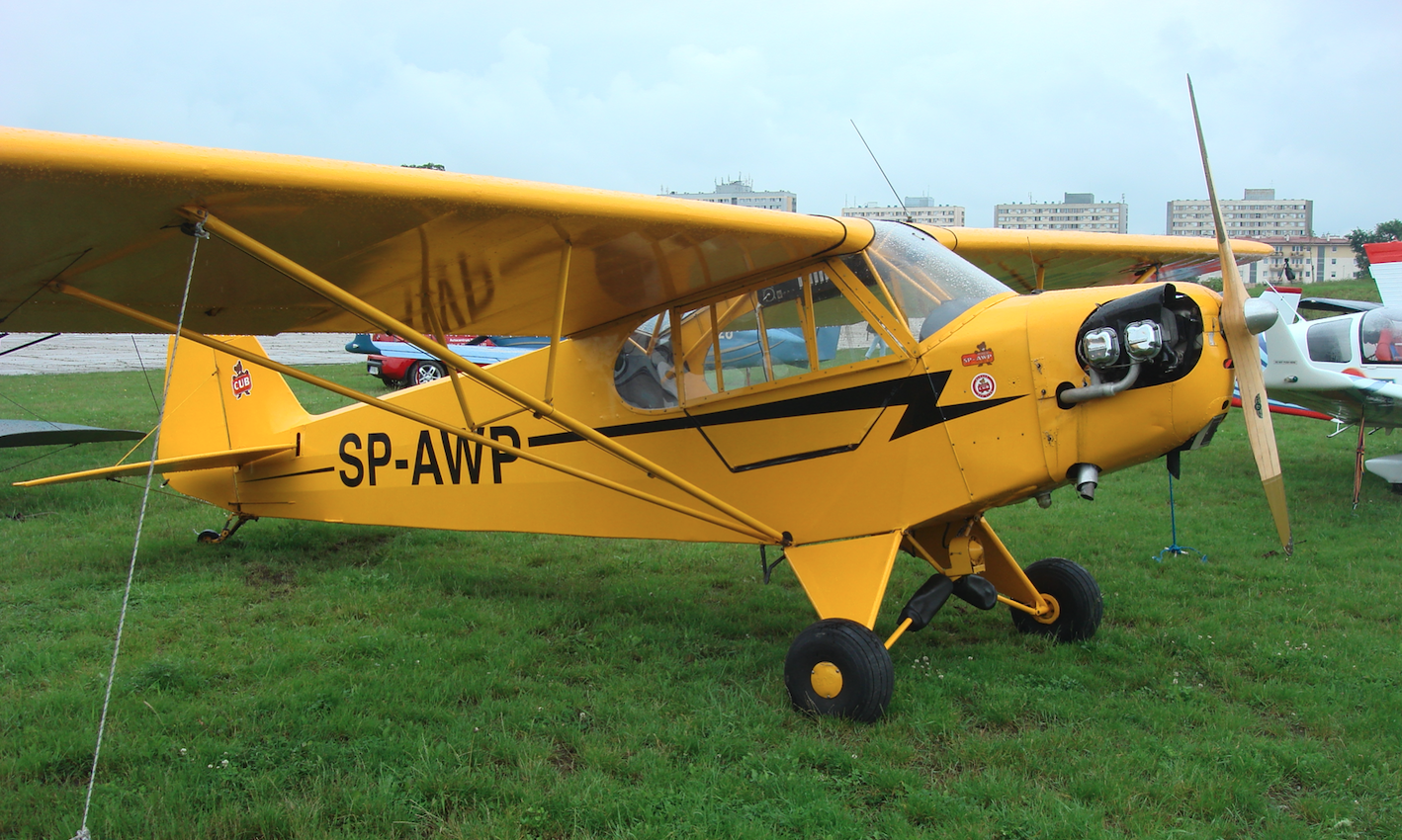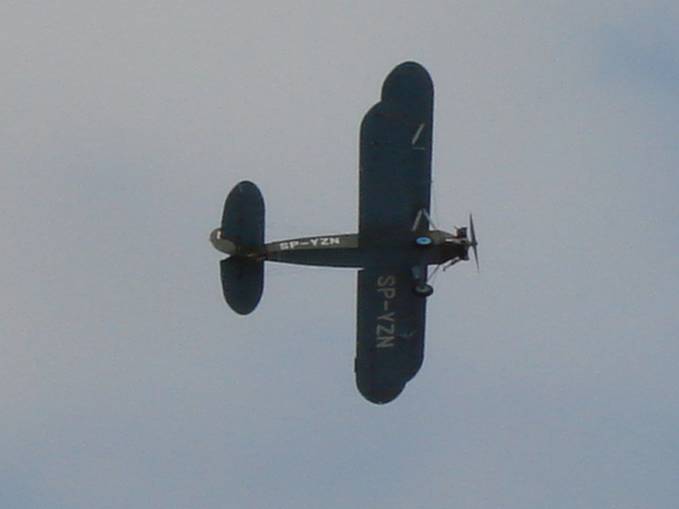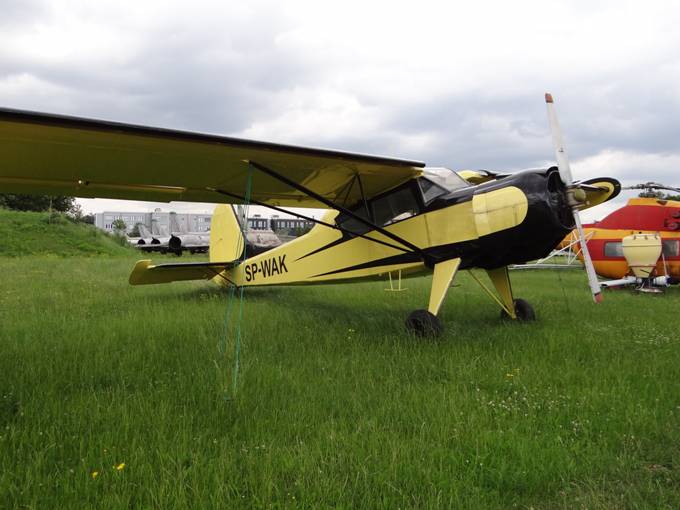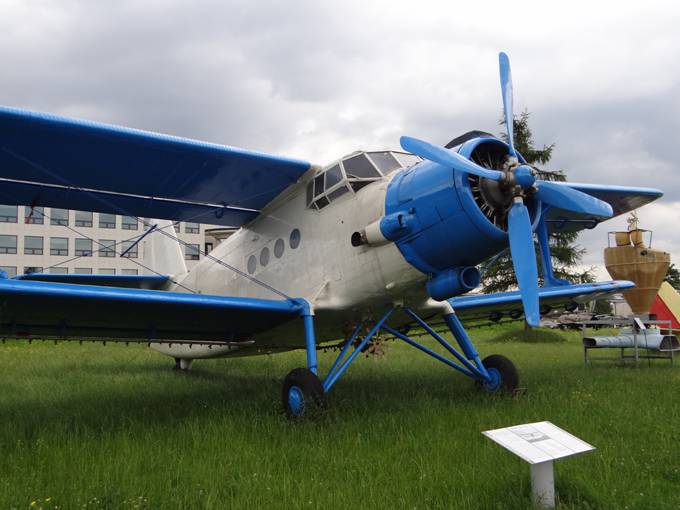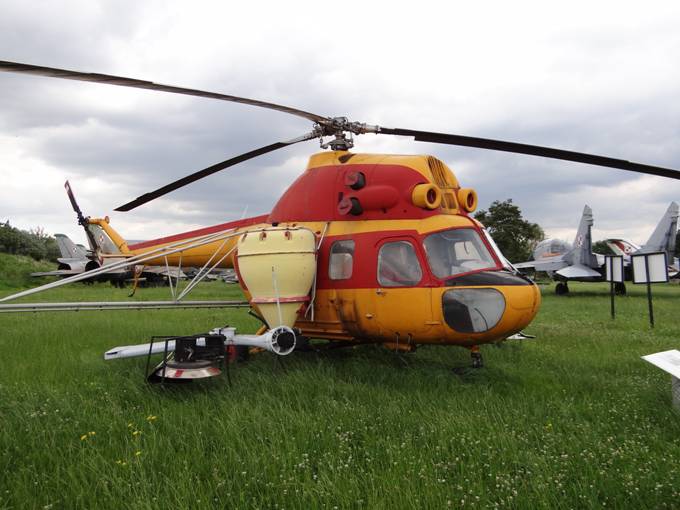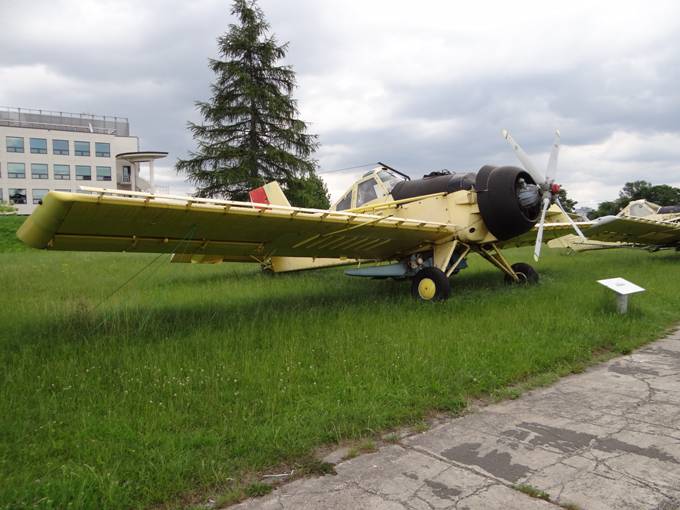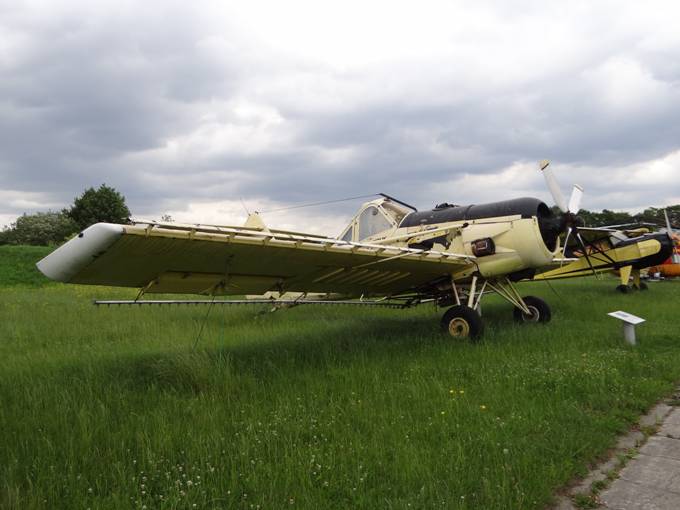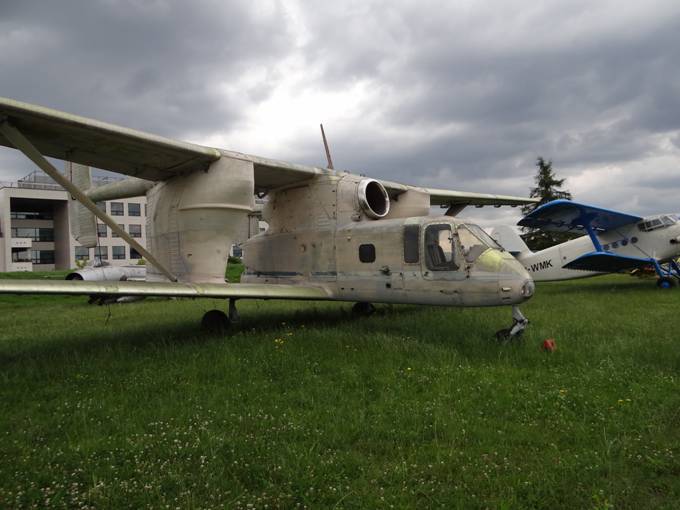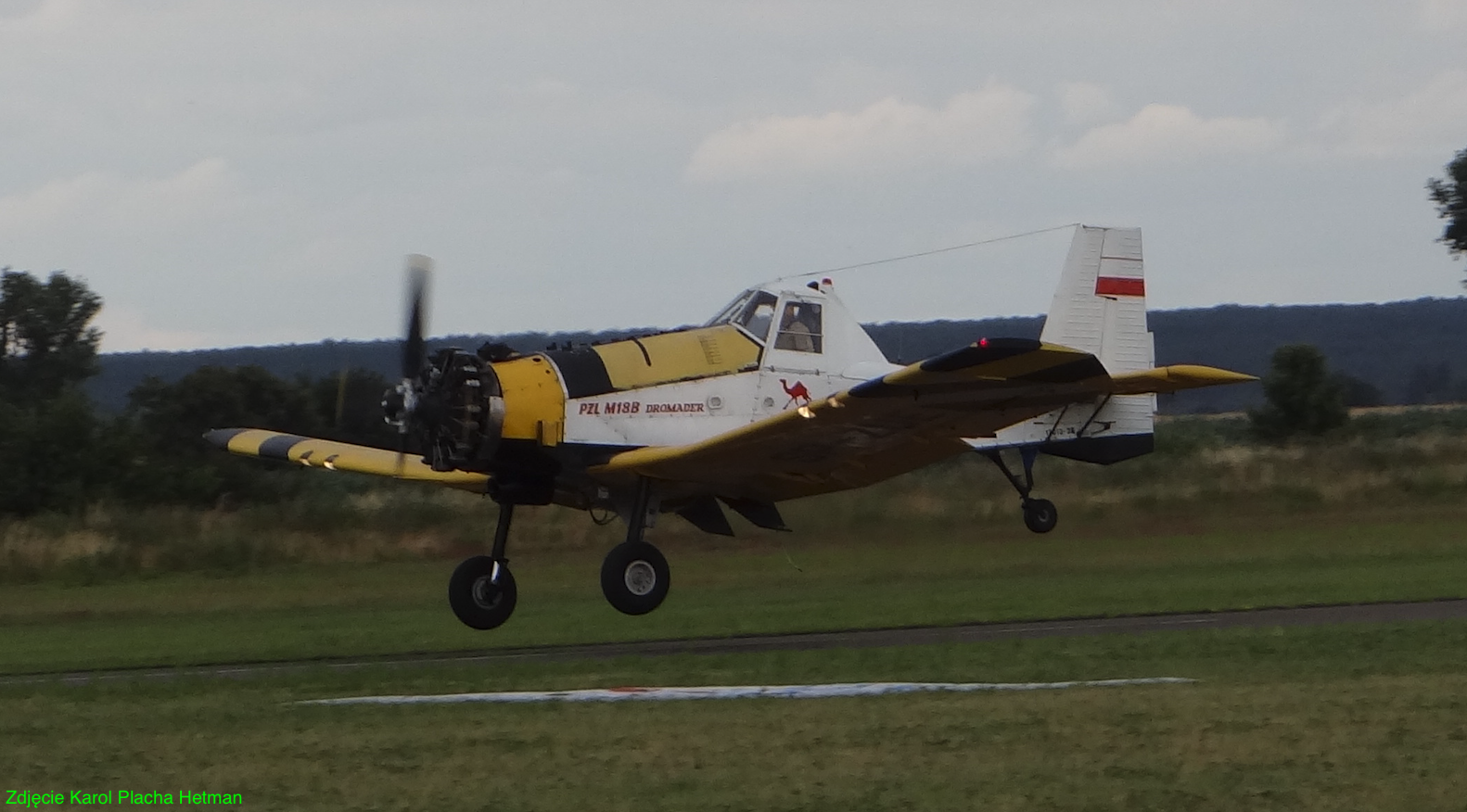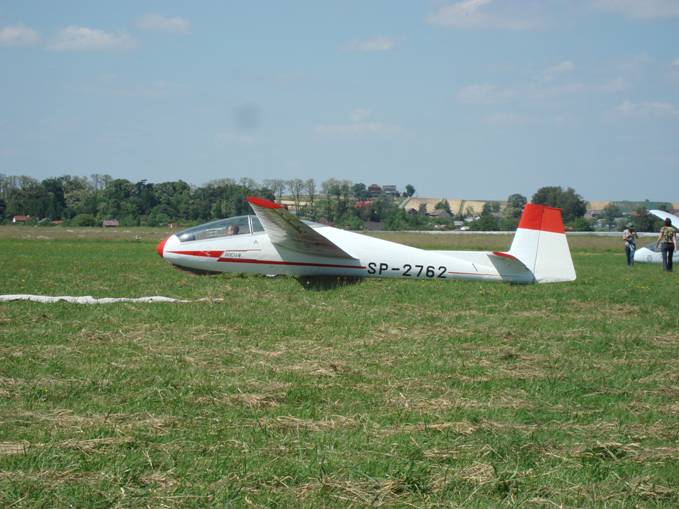Karolewo 2012-09-18
School of Agro-pilots in Karolewo. 1975-1980
Few people remember the existence of the School of Agricultural Pilots in Karolewo. These are mainly its graduates (only 78 people) and some residents of the small town of Karolewo. I am convinced that 99 percent of readers are not able to indicate, even on a map, where the interesting town of Karolewo is located. Entering the name in an internet search engine will not give much, because there are 18 towns with this name in the Republic of Poland.
We’ll start from the beginning. Karolewo is a town located in the Warmian-Masurian Voivodeship, in the Kętrzyn District, in the Kętrzyn Commune. The village is located in the eastern suburbs of the City of Kętrzyn, at the Provincial Road No. 592 Kętrzyn – Giżycko. Karolewo is closely connected with Kruszewec. Karolewo was established in the second half of the 19th century as a workers’ settlement. So it was created at a time when the Masurian Lake District did not belong to the Republic of Poland. Therefore, its original name in German was Carlshof. The settlers were poor workers of nearby factories, looking for better living conditions. A large percentage of the inhabitants were Polish-speaking people, i.e. Poles.
Although the region was multi-religious, the Evangelical-Augsburg Church, i.e. Protestants, was the main leader here. This church in Karolewo built a Nursing Home, which took care of terminally ill people. The ceremonial opening of the Nursing Home took place on October 23, 1882. The ceremony was attended by, among others, Marcin Giersz, publisher in Language Polish; calendars, school songbooks and "Gazeta Lecka" in neighboring Giżycko.
Pastor August Hermann Dembowski managed the Nursing Home for 30 years. Then his younger brother, then his son. The orphanage was very large. In 1907, there were about 1,500 charges here. About 800 suffered from epilepsy (epilepsy). There were also tuberculosis (consumption), alcoholics, mentally ill and other patients with severe chronic diseases. The staff of the institution consisted of about 150 people (deacons and deaconesses). As part of the treatment, occupational therapy was used, which is why the Department had its own farm. In 1913, there were 141 hectares of agricultural land, including 95 hectares of arable land. The farm had: 18 horses, 118 cattle, including 80 cows, 200 sheep and 300 pigs. The area of the farm later increased to 375 hectares, and together with leases exceeded 500 hectares. Agricultural production allowed for self-supply of food and the sale of its surpluses. In the period 1922 – 1928, there was a Preaching Seminary in Karolewo.
In March 1939, the Gestapo entered the Care Center and after a few months the Care Center was liquidated (officially at the beginning of 1940). The bedridden patients were killed by injections. The rest were taken to an overcrowded psychiatric hospital in Olsztyn-Kortowo. The organs from the temple were taken to a military recreation center. The temple itself became a warehouse. The plant was transformed into an SS barracks for soldiers who served in the Wolf’s Lair. The hospital part of the Department was transformed into a lazaret.
Before the expected air raids on Königsberg in 1943, Karolewo became a place where stolen art collections were temporarily held before they were transported to Berlin. Most of the works of art were transported by planes that took off from Wilamowo Airport. (Read a separate Chapter about Wilamowo Airport).
On January 27, 1945, the troops of the 31st Soviet Army of General Piotr Szafranow entered Kętrzyn (and of course Karolew and the Wilamowo Airport). On February 14, 1945, the NKVD plenipotentiary at the 3rd Belorussian Front, General Wiktor Abakumow, arrived. The barracks previously occupied by the Germans were occupied by Muscovites. Muscovites left Karolewo probably in April 1946. At that time, 33 chests with collections from the museum in Königsberg were found in the former temple.
A few remarks here. We, the Poles, did not set the borders after World War II. We, the Poles, did not drive the indigenous people from their homes and land. We, the Poles, did not start this cruel war. The Germans have a grudge against the greatest criminals in the history of mankind; Hitler and Stalin, and above all, to themselves. We, the Poles, are the greatest victims of World War II and have lost the most.
From June 28, 1946, the area of interest to us was part of the newly established Olsztyn Voivodeship. Until that day, this area was defined by the Polish communist authorities as the regained lands and called the Olsztyn District.
In 1948, the new Polish administration decided to use the existing buildings and arable land in Karolewo to create the Agricultural School Complex in Karolewo. As an interesting fact, in the period 1955 – 1961, Mikołaj Beynar, the son of Paweł Jasienica, the author of the History of Poland, was an employee of the school. Mikołaj Beynar conducted the staff choir and led the school orchestra.
In the following years, the Agricultural School Complex in Karolewo developed slowly but steadily. New fields of study were created, adapted to current needs. For example, the direction of education was introduced – the mechanization of agriculture.
Wilamowo airport.
At the beginning of the 1970s, the civil history of Wilamowo Airport began. A group of enthusiasts based at Wilamowo Airport decided to create an aeroclub, which was called Aeroklub Kętrzyński. On June 11, 1973, the Kętrzyn Aeroclub officially began functioning. Two sections were initially formed; parachute and glider. The equipment base was one An-2 aircraft and several gliders. (Read a separate Chapter about Wilamowo Airport).
Agro-aviation 1925-1980.
Agro-aviation is the colloquial name of a type of aviation that provides services for agriculture and forestry in the field of; agricultural technology (sowing and fertilization), plant protection (spraying and dusting), combating forest pests as well as fighting forest fires. Agro-aviation techniques are suitable for large areas, devoid of significant terrain obstacles (power and telephone lines, radio-television and telephone antennas), located far from human settlements, allotment gardens, pastures, drinking water intakes, etc. Agricultural aviation operations should be performed maintaining the lowest flight height over the plantation, not higher than 5 m. However, weather conditions are the most important; wind strength and direction, and precipitation.
The first attempts with the use of aircraft for agrotechnical applications were made in the Republic of Poland as early as 1925. At that time, an attempt was made to control forest pests (Choin strigo and Sosnówka barczatka) in the Mścin forest district near Nowe Miasto Lubawskie, in the then Pomeranian Voivodeship.
The first aircraft adapted to the new task was the French Potez XV. It was a relatively young construction. One of the aircraft used in Poland received two tanks for loose material on the sides of the fuselage, 50 kg each. The atomizing device operated on the principle of air momentum pressure. Flight tests of the converted Potez XV aircraft began on June 10, 1925.
At the same time, the Breguet 14 bomber-reconnaissance aircraft was modified. This aircraft was already obsolete. In the Breguet 14 cabin, a tank for 100 kg of bulk chemicals is installed. The trials of this aircraft took place on July 13, 1925.
Further attempts to control forest pests were carried out in 1927, this time using an adapted Farman F-68BN4 Goliath heavy twin-engined bomber with 500 kg powder tanks.
In August 1927, an airplane was used for crop dusting for the first time. It was a sugar beet plantation near Leszno near the town of Błoń. The plantation has been attacked by a harmful fungus. The Breguet 14 aircraft received a tank of 250 kg of chemicals.
The trials were promising and gave good results. Nevertheless, they required considerable financial outlays, which Poland, destroyed by the partitions and the Great World War, could not afford. The framework solutions were intended to be implemented in 40 years. This, however, was not implemented due to the treacherous attack on the Republic of Poland by Germanic and Muscovite brothers.
The return to the subject of agricultural aviation in Poland came only at the end of the 1940s, i.e. after World War II. Ironically, agro-aviation was encouraged by collectivization and the formation of state farms (state farms). In the period 1948 – 1955, the issue of agricultural aviation was dealt with by the PLL LOT company, which received these tasks from above. The main driver of action was the plague of forest pests, recognized in 1948. 6 Lisunow Li-2 P aircraft belonging to PLL LOT were converted to the Central Aircraft Study for dusting tasks. The aircraft received tanks for 2,000 kg of powder and spraying devices in the fuselage. These planes were used for dusting forests in May-June 1948. Then the apparatus was dismantled and the planes returned to carrying passengers.
In 1952, four Lisunow Li-2 aircraft were equipped with a similar but modernized dusting apparatus and were sent to protect forests, including in Podkarpacie. In the following year (1953), three more aircraft were similarly rebuilt. All seven machines were used until 1955.
From 1951, crop protection aircraft began to be used again. This was associated with the appearance of a dangerous pest of potatoes, i.e. the Colorado potato beetle. At that time, the dusting equipment was installed on 14 Piper Cub L4A light aircraft and 20 CSS-13 aircraft. The planes were taken from Aeroclubs and handed over to LOT Polish Airlines. Piper Cub L4A aircraft were purchased earlier from American surplus. The plane took 120 kg of powder in the tank. CSS-13 aircraft had a tank for 280 kg of powder.
In 1956, LOT Polish Airlines stopped dealing with agricultural aviation. The issue of agricultural aviation was dealt with by specialized companies providing aviation economic services. In 1957, the Economic Aviation Squadron was established in Krosno. On its basis, in 1959, the Aviation Economic Services Team (LZUG) was established at the Aeroclub of the Polish People’s Republic. In 1966, LZUG was transformed into Przedsiębiorstwo Usług Lotniczych (PUL).
In 1960, the production of the first Polish aircraft designed taking into account agricultural requirements began. It became the PZL-101 Gawron based on the Soviet license aircraft Jak-12. PZL-101 Gawron took 500 kg of liquid or loose chemicals in a tank. 330 machines were built, also in the multi-role version.
In 1960, the license production of the Soviet PZL An-2 aircraft began at WSK PZL Mielec. Very quickly, already in 1961, an agricultural version of the An-2 R was developed. They are equipped with two types of installations. The first one is used for dusting with loose chemicals. The other for spraying liquid chemicals. The tank was placed in the hold. It had a tank with a capacity of 1,350 l or 1,600 kg of liquid or powder chemicals.
The intensification of agro-aviation activity was related to the establishment in 1972 of the Agro-Aviation Service Plant (ZUA) at the WSK PZL-Okęcie plant, which took over the existing agro-aviation activity of Przedsiębiorstwo Usług Lotniczych. The subordination of agro-aviation to a company producing, among others, agricultural aircraft, resulted in a dynamic increase in the services it provided. Polish agricultural aircraft operated by ZUA also began to perform numerous agro-aviation works abroad.
In 1975, the Helicopter Services Plant (ZEUS) was established at the WSK PZL-Świdnik plant. This plant performed, among others, helicopter agro-aviation services using PZL Mi-2 helicopters, manufactured in Świdnik.
From 1976, a new, Polish-designed (WSK-Okęcie) agricultural aircraft of a new generation, PZL-106 Kruk, was produced, intended only for agricultural purposes. It takes up to 1,050 kg of chemicals: powders, liquids or granules.
Also from 1976, the world’s only M-15 Belphegor agricultural turbojet aircraft designed at WSK-Mielec, commissioned by Moscow and in cooperation with Soviet designers, was produced. The aircraft was not intended to operate in Poland. These were the sick ambitions of the rulers in the Kremlin and the plane was to be used there.
In the 70s, a group of designers from PZL Mielec, with Eng. Józef Oleksiak as the lead constructor, started in cooperation with the Americans on an aircraft of a similar class to the PZL-106, constructed on the basis of the American Ayres Thrush aircraft. For political reasons, work on the M-18 was stopped and then continued semi-officially at the airport near Rzeszów. The result of these works was the development of the successful PZL M-18 Dromader aircraft, the production of which began in 1978 and continues to the present (2012). The M-18 Dromader takes up to 1,500 kg of chemicals, the latest versions of the M-18 B up to 2,200 kg.
School of agro-pilots in Karolewo 1975-1980.
The intensive development of agro-aviation and the construction of several excellent agricultural aircraft in Poland (Dromader, Kruk) caused a demand for agro-pilots. In 1975, a decision was made to establish a secondary school in this field. The central authorities chose the Technical School of Mechanization of Agriculture in Karolewo as the place of education. Karolewo is a small town located in the eastern suburbs of Kętrzyn. The choice of the school was not accidental. The school had a boarding house. Wilamowo Airport is nearby. The distance from the school to the airport, in a straight line, is only 2 km. The Experimental Center of the Institute of Aviation – Agrolot was organized for the needs of the school at the Airport.
Selection criteria have been established. Candidates were to have a Basic Vocational School education with a specialty in agriculture – cultivation of plants. But there were also candidates who graduated from high school (general high school) and had a high school diploma (maturity certificate). The school exam was a positive result of aero-medical tests obtained at the Military Institute of Aviation Medicine in Warsaw. The candidate obtained the first serious document in his life issued by the commission with the entry – "capable". Of course, not everyone got such an entry.
In Karolewo, candidates applied with a complete set of documents already in June 1975, although officially the education began on September 1, 1975. After positive verification, the students were divided into two groups. Some of the students already had a modest aviation experience (parachute or glider course). They started flight training right away. The second group went home for one month of vacation. They returned on August 1, 1975.
Glider flight training began with theory. There were principles of aerodynamics, meteorology, navigation, construction of gliders and auxiliary equipment. Each section ended with an exam. The last one was the flight theory exam. Now the practical training on gliders has started. From school to the airport, students were transported by a special bus at their disposal. However, it was more common for boarding students to walk to the airport.
The first gliders the students saw were; Storks, Herons and Flies. In addition to the pleasure of learning to fly, the students dragged the gliders to the place of re-launch (because initially they usually landed far from the T-mark). They performed all the activities performed by staff at the airport.
From September 1, 1975, the aviation class, together with the other students of the school complex, started regular first-year technical school education. Pupils were educated simultaneously, as if in two schools. From Monday to Friday, classes included learning the technical high school level, and from Friday afternoon, through Saturday and Sunday, aviation subjects or classes directly at the airport. Much depended on the prevailing weather.
Very quickly the class became very disciplined, athletic, hardworking and making rapid progress. These young people were an example for older people. The instructors and teachers were very demanding but understanding. The staff put great emphasis on safety, and their attitude was shared by everyone. The schedule of classes left practically no free time. The students were heavily burdened with classes and exams. They practically only went to their family homes for holidays. There was no time even for holidays. The only thing that could comfort them was much better food than the other students of the school. And the uniforms that distinguished them from the entire community of Kętrzyn and which was a source of pride. Among the aviation brothers, they were very proud of the subsequent launching ceremonies.
This is how one of the teachers characterized the students of the school. – “The aviation class, as we colloquially called the future farmers-pilots, consisted of exceptional individualists. They were very different from their classmates. Many were only 17 years old and already making important life decisions. They left their family homes and practically no closer contact with their parents was interrupted. They quickly adapted to the new conditions. They had tough personalities and sometimes not easy to tame. They were distinguished by high intelligence. They were all athletic. They were able to find a way out of any difficult situation. They had an innate talent for solving problems on their own. Often their approach to the problem and the way it was solved surprised me. They were smart, but not cunning. Their collective was very tight-knit. They were friendly and trusted each other."
After the gliders, it was the turn of the Ogar motor glider. Then there were airplanes; Koliber and Zlin 42 and Mi-2 helicopter. Practically all the equipment was of Polish production. Only the Zlin 42 aircraft was of Czechoslovak production. (Very similar to the Koliber plane).
The first class of agro-aviators passed their final exams in May 1978, i.e. traditionally. However, flight training was not completed until October/November 1978. After the first year, there were only two more, until 1980, and one additional class. A total of 78 people graduated from the school (1978, 27 men and one lady, 1979, 18 men, 1980, 32 men. The list of names can be found on the website of the School of Agricultural Education in Karolewo (2011)). Graduates obtained a tourist pilot’s license for airplanes and helicopters and the title of a plant cultivation technician. The graduates took jobs at the Agro-Aviation Services Department and the Helicopter Services Department, where they obtained professional licenses. For many years they worked in Poland and abroad. Currently (2012), many of them are still working as pilots, but in other aviation companies. Unfortunately, several people lost their lives in the responsible and difficult profession of a pilot.
One lady started her studies and made it to the end, obtaining a pilot’s license. This lady has been working in the same company, ZUA, since 1978. You are an aviation instructor and lecturer. He flies as an AGRO pilot and puts out fires. This lady is another Polish aviator worth respecting and remembering.
The lack of further recruitment for the agro-aviation class at the School in Karolewo resulted in the liquidation of the Experimental Center of the Institute of Aviation – Agrolot at the Wilamowo Airport. Another effect was the dissolution of the Kętrzyn Aeroclub. But later a new Aeroclub was founded on its former base.
In 1983, the Polish Aero Club dissolved the Aero Club of Kętrzyn. The arguments were; the disappearance of the aeroclub activity and the activity of the members, and the lack of interest of the local authorities. Let’s be honest. The functioning Experimental Center of the Institute of Aviation – Agrolot was financed from the central budget. This ensured the stability of the functioning of the Wilamowo Airport, and also the Kętrzyn Aeroclub. The City’s lack of interest in taking over the Kętrzyn Aeroclub, and thus the Airport itself, resulted only from the lack of funds for such activities in the local budget. The region was and is poor and always badly treated by the central authorities.
In the following years, the Wilamowo Airport is systematically degraded and almost disappears from the aviation map of Poland. Fortunately, in 1999, the airport found new owners and began a new dynamic history of development. The Aeroclub of the Lake District is established. But that’s a topic for a separate article.
Currently, the agricultural school complex still exists. The teaching profile has been slightly changed and it is called the Complex of Secondary and Vocational Schools in Karolewo. There is also a junior high school in Kętrzyn commune in Karolewo. In September 2008, a new sports hall was commissioned at the Kętrzyn Commune’s Junior High School.
Since 2008, the Secondary and Vocational School Complex in Karolewo has been subordinated to the Ministry of Agriculture. The name was changed to the School Complex of the Agricultural Education Center named after General Franciszek Kamiński in Karolewo. Fields of study; agricultural mechanization technician, farmer technician, landscape architecture technician, rural tourism technician, mechanic operator of agricultural vehicles and machines, nutrition and catering services technician, cook.
Address: Karolewo 12, 11-400 Kętrzyn.
Written by Karol Placha Hetman

